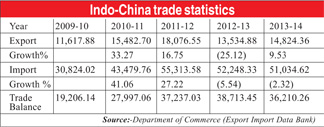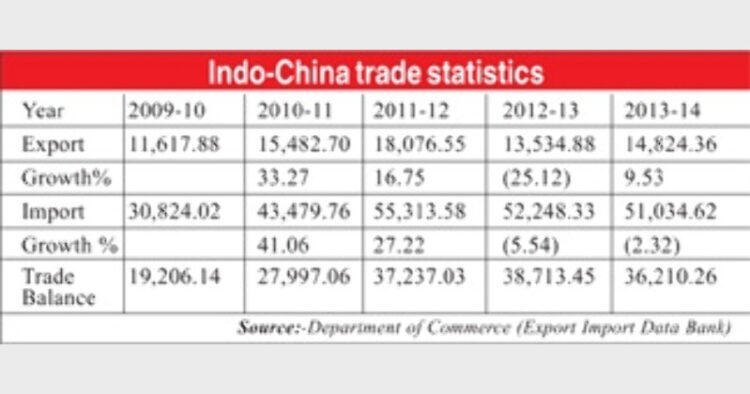 Past few weeks have been very significant for the Indian diplomacy as Prime Minister Narendra Modi visited Japan and USA while Chinese president Xi Jinping visited India. While cordial relationship with every nation is important, China enjoys a special status because of historic reasons. And even though both the countries have taken confidence building measures post 1962 conflict, they still continue to be skeptical about each other.
Past few weeks have been very significant for the Indian diplomacy as Prime Minister Narendra Modi visited Japan and USA while Chinese president Xi Jinping visited India. While cordial relationship with every nation is important, China enjoys a special status because of historic reasons. And even though both the countries have taken confidence building measures post 1962 conflict, they still continue to be skeptical about each other.
In the past few years, China has developed Pakistan as its surrogate and has even armed it with nuclear capability to check the Indian dominance in the sub-continent.The Chinese wanted to encircle India and make inroads into countries like Sri Lanka, Bangladesh and Maldives where they don’t have any material business interest.
The recent example being China warning India against taking any action that may “complicate the boundary issue after India announced plans to build 54 new border posts in Arunachal Pradesh on October 24, while the fact is that China has already developed infrastructure in the disputed territory which poses a threat to our security.
It is a matter of fact that both the countries are increasingly bonded together by commercial ties and the intensified trade and commerce has eventually raised the Chinese stakes as a result of which there are remote chances that any armed conflict will happen. Bilateral trade between the two regional giants have grown multifold over the past two decades, but it is highly imbalanced from Indian perspective (Refer table).The trade deficit is not only a concern for us but the composition of traded goods is a matter of caution because we export the raw material and import the goods which are made out of that raw material. It is worthwhile to mention that India is the largest producer of jute, second largest producer of silk and cotton, but even then, the export textile market is dominated by the Chinese.
Both the economies are competitive rather than being complimentary to each other and we have to compete and cooperate simultaneously with China. Indian products are known for their high-quality, whereas the Chinese competitive advantage lies in mass production and this is the area where we can learn from them. PM Modi’s vision of “Make in India” can take us forward as we don’t want to become an economy which is largely dependent on tertiary sector only.
As of now India is becoming like an assembling hub where products manufactured outside the country are imported and assembled. Forget about major automobile giants like Audi, Volvo and Volkswagen who import the components and then assemble it in India. Our markets are flooded with made in china products which is badly impacting the indigenous players.
Fortunately, there is change in the circumstances in both the countries and we should capitalise this opportunity. While China is facing labour relation problems, India is trying to attract the manufacturers by replacing red-tapism with red carpet. As far as massive trade imbalance is concerned, it will not be fixed unless China opens up to India’s IT industries as this is one area where we enjoy an edge.
From the market perspective, both the countries stand big as their domestic market is a big contributor to their growth. Indian middle class has changed its spending habits and the domestic retail sector (excluding villages & towns) is expected to be Rs. 47 laks crores by 2016 (Source- Assocham study) which is a clear indication that the strength of our domestic consumption is going to increase further.
Economic cooperation doesn’t necessarily guarantee national security and we must continue to remain assertive. We have seen Chinese unrest in the past when they objected the Indian presence in South China Sea (ONGC Videsh and Petro Vietnam deal). It is equally important that while exercising caution, we continue with our “look east” policy.
-Shshank Saurav ?
(The writer is a Chartered Accountant)













Comments